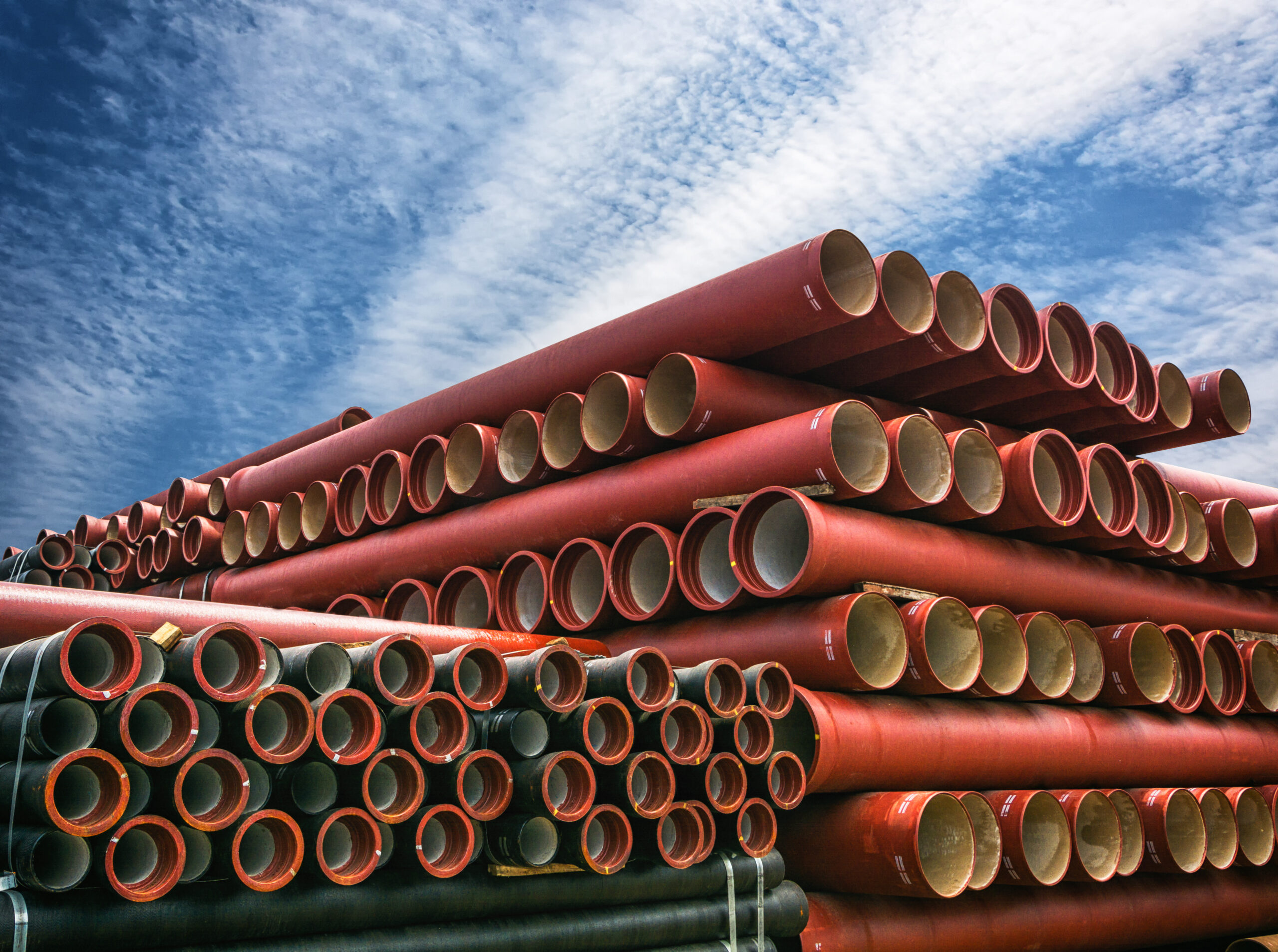We use products made from galvanized iron and cast iron almost every day yet fail to acknowledge the importance and differences between the two types of items. It goes without saying that it is with these two iron types that our everyday lives have become significantly easier over the years.
In this post, you can learn everything you need to know about the differences between galvanized iron and cast iron and their common applications and benefits.
Galvanized iron vs cast iron: differences
Galvanized iron is one of the most common types of iron that is highly ubiquitous around us. Galvanized iron is different from normal iron as it is coated with a protective layer of zinc on the exterior. The galvanized zinc coating protects the iron from weather-related degradations such as rusting. And as galvanized iron is more weather-resistant than normal iron, it has better longevity and therefore is a value-for-money choice.
On the other hand, cast iron is similar to steel, it is an alloy of carbon and iron. While gamma iron is specifically designed to be weather-resistant, cast iron is designed to have high compressive strength. Also, cast iron has a significantly lower melting temperature as compared to galvanized iron. This is the reason why products designed for heating applications are made of cast iron to ensure high longevity and user safety.
Galvanized iron applications
Here are some of the common applications of galvanized iron:
- Decorative metal showpieces
- The exterior body part of electronic items and household appliances
- Roofing ornaments
- Window and door foods
- Wall ornaments and cornices
Galvanized iron pros and cons
It goes without saying that the biggest benefit of gamma iron is added protection against weather-related degradation. However, galvanized iron isn’t totally resistant to corrosion. This is because even the highest quality galvanized iron can develop corrosion when exposed to severe impurities such as tannic acid, acid rain, and concrete.
Cast iron applications
Similar to gamma iron, cast iron is ubiquitous and is used for various types of applications. Here are some of the common applications of cast iron:
- Industrial components
- Anchors for ships
- Skillets and other heating household utensils
- Automotive parts
- Oil mining machines
Cast iron pros and cons
There is no denying the fact that cast iron is one of the most durable and rugged types of iron that is commercially available. When compared to galvanized iron, cast iron is significantly durable in terms of heat resistance as well as tensile strength.
Cast iron is highly resistant to deformation due to its high level of tensile and structural strength. This is why many heavy machinery parts are made from cast iron. Cast iron also has a high level of non-stick capabilities. And this is the reason why it is used in a wide range of household utensils, including skillet pans.
Cast iron is also resistant to a high level of vibration. Unlike other metals, alloys, and other types of iron, cast iron is highly effective in damping a high level of vibration. This is the reason why the base part of most vibrating machinery is made from cast iron.
Cast iron, however, does have a couple of disadvantages. The biggest disadvantage of cast iron is it is prone to rust and corrosion. Unlike galvanized iron, cast iron doesn’t have a protective zinc coating that makes it corrosion-resistant.
Another major disadvantage of cast iron is it is significantly heavy. When compared to galvanized iron and other alloys and steels, cast iron is significantly heavy. As such, large-sized utensils, machinery, and other objects made from cast iron are significantly heavy.
Galvanized iron vs cast iron: which is better?
To say that galvanized iron is better than cast iron or vice versa is not fair. This mainly has got to do with their properties and applications. Due to the high level of corrosion resistance of galvanized iron, it is highly suitable for applications that involve exposure to weather corrosion and some degrees of chemical corrosion.
On the other hand, cast iron comes as one of the best choices for achieving the best of affordability and uncompromised durability and longevity. What’s most interesting to know is that cast iron is widely available in almost all areas. Also, cast iron has a higher level of machinability. In simple words, it can be transformed or created into any shape and form with utmost efficiency.
Interesting facts about galvanized iron and cast iron
Here are two of the most interesting facts about galvanized iron and cast iron that can keep you entertained:
Different types of cast irons
Yeah, you read that right. There is not just one but different types of cast iron, they include malleable iron, ductile iron, white iron, and grey iron. Which types of cast iron have their own specific properties which make them unique from each other.
Malleable iron, as the name suggests, has a high level of ductility and therefore can be converted into any shape or form with heat. Ductile iron is similar to malleable iron; has a higher level of ductility while ensuring a higher level of strength.
White iron is the type of cast iron that has the highest level of compressive strength. Compared to malleable and ductile cast iron, white cast iron has significantly better resistance to wear. Lastly, grey iron has a high level of machinability. It is also highly resistant to galling and wear.
Different types of galvanization process
There is not just one but different types of processes for galvanizing iron. One of the most common ways is hot-dip galvanization. In this method, iron is directly dipped into molten zinc in order to coat the iron from the exterior.
Another popular form of galvanization is known as metallic spraying. As the name of the procedure suggests, molten zinc is directly spread in a uniform way to clean iron. This process is more cost-effective than hot-dip galvanization as it involves the use of molten zinc in lesser amounts.
